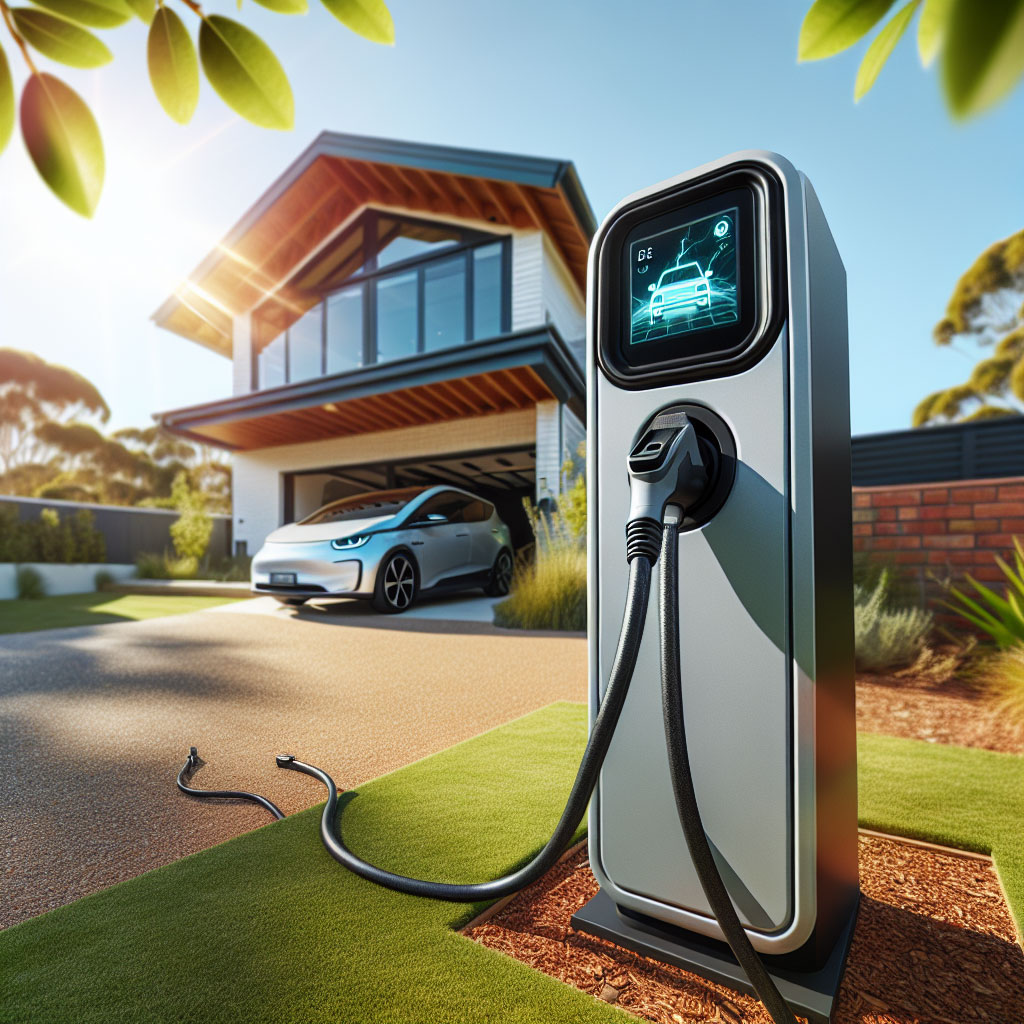
Electric vehicles are no longer niche toys for early adopters. As EV uptake accelerates across Australia, charging infrastructure is moving from optional amenity to a material property asset. From detached homes in the suburbs to inner-city apartments and commercial portfolios, the presence – or absence – of practical, safe EV charging affects buyer demand, tenant retention and, ultimately, valuation.
This article explains how EV charging is shaping the Australian property market in 2025, what landlords, developers and owners should consider, and practical steps to future‑proof real estate assets.
Why EV Infrastructure Matters in Australian Real Estate
EV ownership is rising rapidly. The Electric Vehicle Council reports significant growth in sales since 2021, and many market indicators show that buyers increasingly expect properties to be “EV-ready.” For purchasers who drive, or plan to drive, an EV, access to convenient home or workplace charging is highly influential when weighing property choices. For owners and investors, the presence of charging infrastructure can support better rental yields, shorter vacancy periods and stronger offers at sale.
Key reasons EV infrastructure now matters:
- Convenience and running-cost savings for owners and tenants.
- An indicator of a property’s energy credentials and future-readiness.
- A differentiator in competitive markets-especially in metropolitan Melbourne, Sydney and Brisbane.
- A factor in corporate and government tenant decisions for commercial buildings.
Types of Chargers and What They Mean for Property Value
Understanding charger types helps clarify the value proposition.
- AC (Level 2) home chargers: Typically wall-mounted units delivering around 3.6-7.2 kW. These are the most common residential installations. They require a dedicated circuit and, depending on site conditions, may cost a modest sum to install. Having a permanent, smart AC charger increases a home’s appeal to private buyers.
- Destination and workplace chargers: Slightly higher-capacity AC chargers (up to 22 kW) or shared charging bays. These suit apartment complexes, retail centres and office car parks.
- DC fast chargers (50 kW and above): Commercial-grade units designed for quick top-ups. These are costly to install and operate but provide a clear commercial offering for retail and public-facing properties.
Residential implications: EV-ready vs EV-installed
There is a difference between being “EV-ready” and having chargers installed. EV-ready means the property has the electrical capacity and conduit paths to support a charger installation with minimal additional work. EV-installed means a charger is already mounted and operational. Buyers often prefer homes with installed chargers because it removes the uncertainty and cost of retrofit work. In markets with higher EV adoption, homes with installed chargers can command greater buyer interest.
Multi-unit buildings and strata: challenges and solutions
Strata schemes and apartment developments present unique challenges: shared electrical infrastructure, competing demands for scarce parking and a range of resident needs. The good news is that industry practice and state-level regulations are evolving to make installations easier.
Practical options for multi-unit buildings:
- Dedicated chargers at individual car parks (preferred for convenience and valuation uplift).
- Shared charging bays with booking systems.
- Networked chargers with load management that allow multiple cars to share available power safely.
- Portable charging solutions paired with adaptable sockets for interim needs.
Developers and strata managers will need clear policies on costs, billing, access and safety. Many Australian states have introduced reforms to streamline approvals for owner-installed chargers in strata situations, but rules differ, so local legal advice is recommended.
Commercial property: tenant demand and corporate responsibility
For commercial buildings, offering EV charging is increasingly a baseline expectation for certain tenants, particularly those with sustainability goals or fleet electrification plans. On-site charging can support employee attraction and retention, increase dwell time at retail locations and position a building as ESG-aligned. Fast chargers can be a revenue stream, but require careful consideration of network capacity, capital cost and operating agreements.
Costs, incentives and technical considerations
Costs vary widely. A typical residential AC charger installation may range from a few hundred to several thousand dollars depending on unit cost, wiring, switchboard work and any necessary upgrades. Commercial and DC fast-charging projects can be much more substantial investments.
Key considerations:
- Electrical capacity and switchboard upgrades: Some properties require meter upgrades or switchboard work to accommodate a charger.
- Load management: Smart systems can prevent overloads in multi-charger environments and optimise charging times.
- Metering and billing: In rentals and commercial properties, owners must decide how to allocate electricity costs-individual metering, landlord‑billed tariffs or ad‑hoc arrangements.
- Solar and battery integration: Pairing chargers with on-site solar and battery storage can reduce operational costs and ease grid strain.
- Permits, standards and safety: Installations must comply with electrical standards and local council requirements. Engage accredited installers.
Government policy and market direction
Australian federal, state and local governments have introduced a range of incentives and regulatory reforms to support EV uptake and charging infrastructure. Several councils now require EV-ready provisions in new developments, and energy agencies (such as the Department of Climate Change, Energy, the Environment and Water and ARENA) provide guidance and funding programs. These measures are shifting expectations: new builds increasingly need to demonstrate EV readiness to meet planning and market expectations.
Valuation and market evidence
While precise valuation uplifts depend on location, market conditions and the type of charger provided, industry surveys and real-estate feedback indicate that EV infrastructure can be a competitive advantage. In suburbs with high EV adoption, being EV-ready or having an installed charger can shorten time on market and influence buyer offers. For commercial assets, the lack of charging infrastructure can be a deterrent for prospective tenants with sustainability mandates.
Practical steps for property owners, developers and investors
- Assess readiness: Commission an electrical audit to determine capacity and what upgrades are needed.
- Start with EV-ready infrastructure in new builds: Install conduits, spare capacity and simple metering to keep future installation costs low.
- Choose smart chargers: Networked, load-managed chargers protect assets and allow scalable deployment.
- Consult strata and legal advisors early: Clarify rights, responsibilities and cost allocation in multi-unit settings.
- Consider solar and storage: They improve sustainability credentials and can lower running costs.
- Communicate benefits to buyers/tenants: Highlight convenience, potential running cost savings and future-proofing.
Conclusion
EV charging infrastructure has moved from a technological novelty to a strategic property consideration in Australia’s real-estate market. Whether you own a house, manage an apartment block or develop commercial property, the way you approach EV charging will affect tenant demand, buyer perception and long-term asset value. Planning ahead – through EV-ready design, smart charging solutions and clear strata governance – is the most cost-effective way to capture the upside of electrification while avoiding retrofit headaches.
Frequently Asked Questions
Q: Will an EV charger increase my house price?
A: Chargers can improve buyer interest and marketability, particularly in suburbs with high EV uptake. While uplift varies, properties that are EV-ready or have chargers installed are often perceived as more future-proof, which can influence offers and time on market.
Q: What is the difference between EV-ready and having an installed charger?
A: EV-ready means the property has the electrical capacity, cabling or conduit to support a charger installation without major disruption. Installed means a charger unit is already mounted and operational. EV-ready is lower cost at construction; installed units remove buyer uncertainty.
Q: Can I install a charger in a strata scheme or apartment?
A: Yes, but strata rules and processes apply. Many states have reformed strata laws to make installations easier, but procedures differ. Options include dedicated chargers per bay, shared bays with booking systems, or networked chargers with load management. Seek strata committee and legal advice early.
Q: How much does it cost to install a home charger?
A: Costs vary depending on the unit and site conditions. A basic AC wall charger plus installation can range from a modest outlay to several thousand dollars if switchboard upgrades or long cable runs are required. Commercial and DC installations are significantly more expensive.
Q: Are there government rebates or incentives?
A: Various federal and state programs, as well as local council incentives and grants, exist to support EV adoption and charging infrastructure. These programs change over time; check the Department of Climate Change, Energy, the Environment and Water (DCCEEW) and ARENA websites and your state government resources for current schemes.
Q: Should I invest in DC fast chargers for a commercial property?
A: DC fast chargers can attract traffic and provide a revenue stream but require substantial capital, high power supply and ongoing maintenance. Conduct a feasibility study that considers grid capacity, expected demand, payback period and regulatory requirements before proceeding.
About EV Evolution
EV Evolution is the leading online platform dedicated to Australian electric vehicle owners and enthusiasts. We foster a vibrant community, delivering essential EV news and insights, and enhancing user engagement through our innovative, AI-powered chatbot for dynamic discussions. Our mission is to empower Australian electric vehicle owners and enthusiasts by fostering a vibrant, AI-driven online community that connects, informs, and advances the nation’s electric vehicle landscape.




